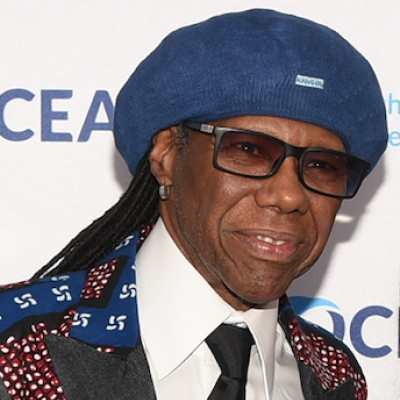Farmer Julia Niiro received firsthand experience of the negative effects brought about by mega-industrialized farming as 90% of America’s small farms face extinction and huge corporations take over while pushing profit over people and the environment. Delivery vehicle emissions contribute to the largest source of air pollution in the United States with 1,500 miles being the national average distance they travel from farms. And those farms receive less than 10% of the profit from the food bought. Niiro knew a radical distribution system had to be created, which brought her to founding MilkRun, a website (app coming soon) where customers fill up their virtual basket shopping locally-sourced, quality groceries coming directly from farms in the area. The farmers receive 70% profit and that 1,500-mile driving distance is cut down to 35 miles—a 97.7% decrease in delivery vehicle emissions if every major city participated. Since starting up less than two years ago, Niiro has grown a full distribution system catering to more than 3,000 customers in Portland, Oregon, and is now expanding to other cities. She believes that “local food should be readily available to everybody,” and she only works with small farms who follow natural, sustainable practices with Animal Welfare approval and Global Animal Partners (GAP) certification. The MilkRun model is pairing today’s technology with the milk man days of the past when households were supplied directly by their food producers.
negative effects brought about by mega-industrialized farming as 90% of America’s small farms face extinction and huge corporations take over while pushing profit over people and the environment. Delivery vehicle emissions contribute to the largest source of air pollution in the United States with 1,500 miles being the national average distance they travel from farms. And those farms receive less than 10% of the profit from the food bought. Niiro knew a radical distribution system had to be created, which brought her to founding MilkRun, a website (app coming soon) where customers fill up their virtual basket shopping locally-sourced, quality groceries coming directly from farms in the area. The farmers receive 70% profit and that 1,500-mile driving distance is cut down to 35 miles—a 97.7% decrease in delivery vehicle emissions if every major city participated. Since starting up less than two years ago, Niiro has grown a full distribution system catering to more than 3,000 customers in Portland, Oregon, and is now expanding to other cities. She believes that “local food should be readily available to everybody,” and she only works with small farms who follow natural, sustainable practices with Animal Welfare approval and Global Animal Partners (GAP) certification. The MilkRun model is pairing today’s technology with the milk man days of the past when households were supplied directly by their food producers.
It sounds like it takes a lot of precise coordination to make this work. Can you describe the process of getting an order from website to doorstep?
Customers can fill up a virtual “basket” on the MilkRun webpage (we’re working on an app), then select delivery for Tuesday or Thursday. Once the order window closes, our farmers, bakers and butchers bring their goods to a micro-depot. From there, MilkRun staff aggregates the products to fulfill customer orders. It takes precise coordination on our end, but for MilkRun customers it’s a very simple process. You shop the aisles of our online grocery store then the food arrives at your house.
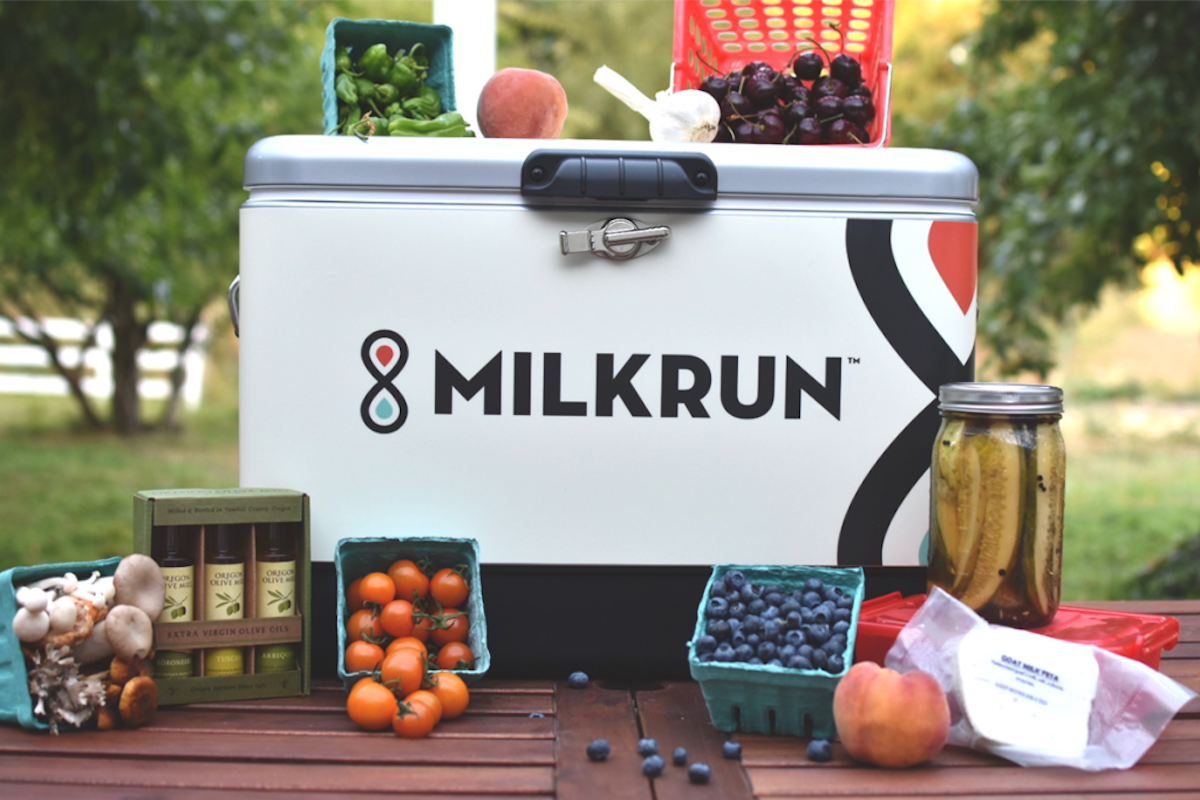
How are you managing this without delivery or subscription fees?
Because we’re able to cut out the middleman driving food 1,500 miles across the country, we’re able to pay farmers more for their labor and take a much smaller cut than distribution companies traditionally do. We have less people in the supply chain taking a cut of profits as the food passes through their hands on the way to your grocery store. Today, less than 10% of the price of the food you buy in a grocery store actually goes back to the farmer who grew it. We developed a system where our farmers get 70% to our 30%. Without the burden of an unnecessarily complex supply-chain bogging us down, we can cut out delivery and subscription fees. Local food should be readily available to everybody.
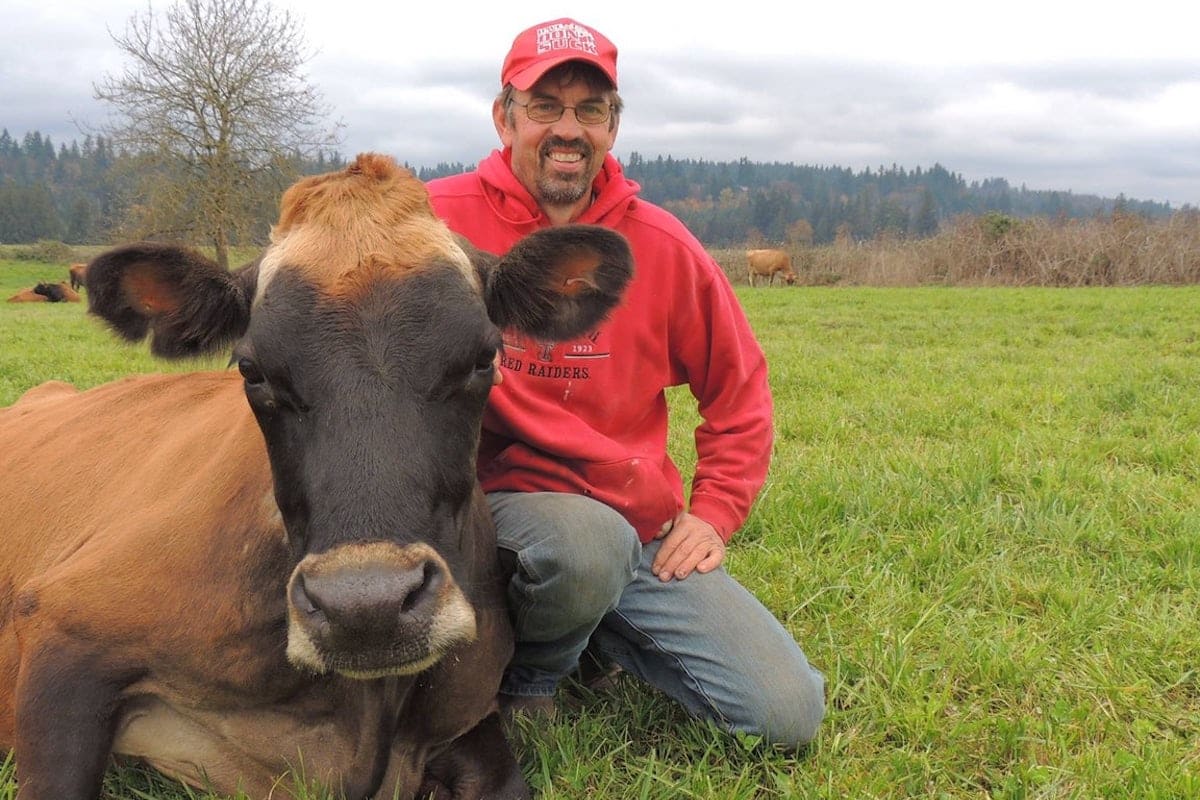
The farthest your food goes from the farm is thirty-five miles. The national average is 1,500 miles. Why is local more environmentally-friendly?
Locally grown food creates important economic opportunities, provides health benefits, and helps to reduce environmental impact. It also brings the community together and gives people an opportunity to make a difference.
Pollution from vehicles is the single largest contributor to air pollution in the United States, and cars and trucks combined emit one-fifth of the country’s total air pollution. Imagine the positive environmental impact if every major city cut down 1,500 miles of food delivery to 35! That would be a 97.7% decrease in delivery vehicle emissions. It’s hard to imagine but it’s totally possible. In fact, the name MilkRun is a logistics terms and its very definition is the most effective way to most goods, with the least handling and cost. It turns out the milk man had it right for a long time.

What’s most rewarding about this work?
It’s rewarding to have the ability to solve a problem that directly affects people I know. It’s my community, my neighbors, my business, the people I admire. This was an idea built from within, born out of solving a problem faced by myself and my community. It’s pretty amazing to see people I admire use MilkRun, people who inspired me to work on this project in the first place. Mark Payne, a fifth generation hog farmer, who is just doing the most amazing work, shook my hand and said, “Thank you for helping me put food on peoples’ plates.” He’d only been able to sell his pork to restaurants before and MilkRun made it possible for him to put local pork directly in the hands of people who wanted it, but didn’t have access before. Helping people like Mark, and the rest of my community is what’s rewarding about this work.

Do you see this as a way to do away with the mega-industrialized farms?
It’s hard to say if we’ll see mega-industrialized farms disappear completely within our lifetime, but if we don’t change the way food is currently distributed, locally grown food will disappear. 90% of the small farms in America right now are facing extinction, and farmers who care about their soil, their land and their communities are often at the mercy of huge corporations pushing them down and paying less-than-adequate wages for their labor. If mega-industrialized farming becomes our only option for food, we’ll have no more farmer’s markets, no more CSAs, no more farmers who are stewards to the land. Without radical new systems like MilkRun, the only options for food will be from huge corporations pushing profit over people, and we just don’t want to live in that kind of a world.
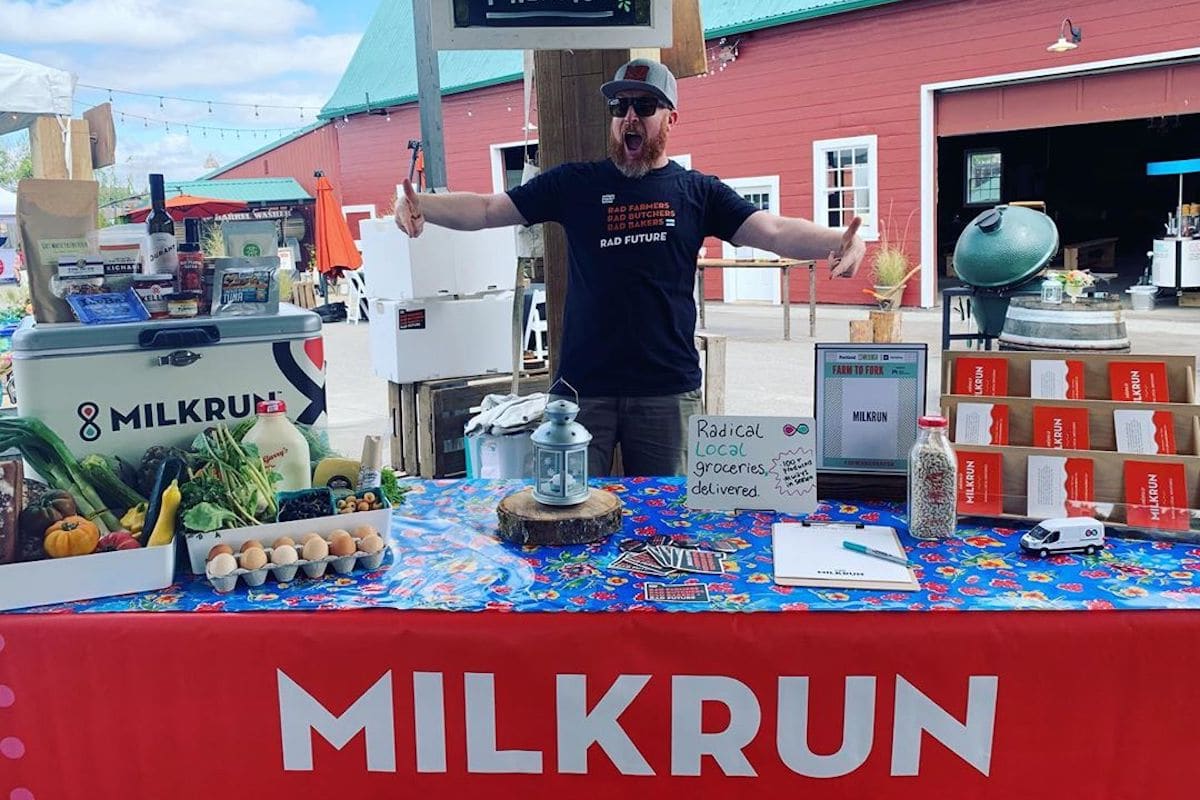
What sort of response are you having?
It’s been a hugely positive response! There are two perspectives that really matter to us—the producers and the customers. For producers, they’re excited that we’re able to offer them not only a fair wage but another marketplace from which to sell what they make (people like Mark at Payne Family Farms). From the customer side, the feedback has been nothing but encouraging. We’ve heard from so many households that now have access to the amazing food growing around Portland about how much it means to them. We live in an area with abundant food resources that haven’t always been available to everybody, but now they are. As for hard numbers, they speak to the enthusiasm people have for MilkRun’s concept—our total monthly order count since coming out of beta in December 2018 (until April 2019) is up 300%. Monthly sign ups in the same time frame are up 500%. It has been incredible thus far.
I just returned from a trip to Detroit where we are discussing launching MilkRun. To hear of the need from a city like Detroit and the farmers of Michigan was incredibly validating. They are in even greater need with less access to markets than a city like Portland. To hear their food waste and farm income issues was staggering, but hearing their need and openness to our platform was exhilarating to say the least.

How are the animals treated on the farms you work with?
MilkRun has a close relationship with our sister company Revel Meat Co and all of our meat comes from their facility, which is one of only two remaining USDA meat processing facilities in the state that works with independent ranchers. It’s both Animal Welfare-approved and Global Animal Partners-certified (GAP), which is an international certification that ensures animal welfare from ranch to processor. 100% of the small farms that support MilkRun use natural and sustainable practices when raising their animals like pasture rotation and regenerative processes, and focus on animal welfare. Everybody at the Revel facility has been trained and tested to provide as little discomfort as possible in their practice. They never use electric prods or any tools for moving animals other than naturally herding them at their own preferred (usually walking) pace. Revel is a low-stress, low-anxiety facility that works with MilkRun because they support over 60 regional producers that are extremely value-aligned and earnest in their practices. This is the alternative to factory-farmed meat. And we feel good about it! It’s part of why I started MilkRun, by seeing the demand and need for more humanely treated and sustainably raised meat in the market. There was a lack of access to meat from these sustainable facilities and farmers, so we had to find a way to make it work.

Do you have plans to roll this out in every state?
Though it’s only available in Portland for now, we hope to be piloting MilkRun in Seattle by the end of this year before eventually expanding into Austin and Denver. This is a new model for food distribution, but it really does work in favor of both farmers and customers. We don’t have the whole country mapped out quite yet, of course, but if we can assist small farms countrywide the way we’re able to do here in Portland, there’s no reason it wouldn’t work. This model is designed to work in any community that has local farms nearby, which we all have.
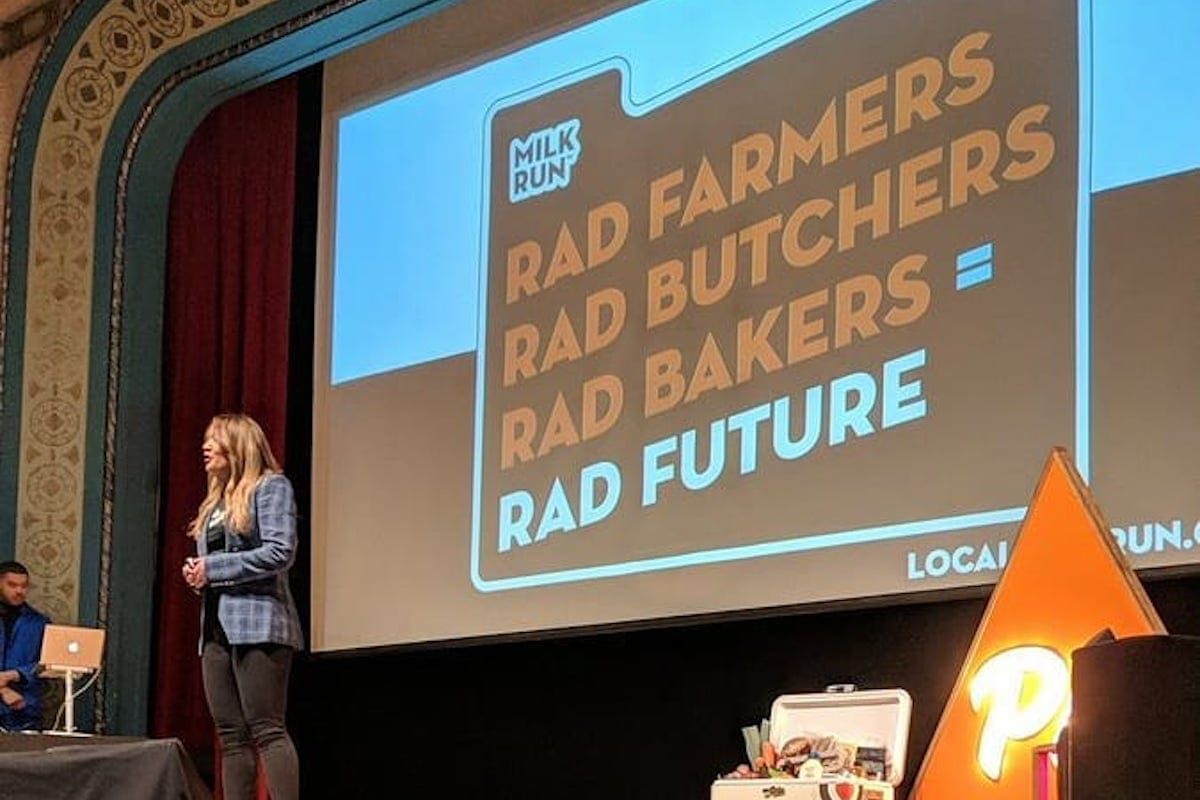
So many of these sorts of food delivery companies are struggling. What makes MilkRun different?
The simple answer is that MilkRun is not a tech approach food delivery company, so we don’t face the same struggles that those companies face. We are designing a new model for local food systems enabled by technology and yes, part of that process is the home delivery of your goods, but the overall function is fundamentally different. While current food delivery companies are adding additional layers to an already bloated supply chain, we’re removing them. Food delivery companies are simply paying someone else to go to a grocery store (or dark store) to pick up your order and deliver it to your house. With that model, you still have the entire industrial food distribution system in place—you’re just adding one more step before the food gets to your door.
We built MilkRun to extend the original home delivery model used by farmers to supply their local communities before the 1970’s USDA secretary pushed a “get big or get out” policy that fundamentally affected local farming. Before then, food wasn’t priced based on global markets and the costs of shipping 1,500 miles by brokers and distributors, who have no interest in the value chain. We’re trying to help small farmers get back to their roots—growing food and getting paid a livable wage to do it. Goodness knows they deserve that.
Today, the only way to buy food direct from a local farmer is at a farmer’s market or CSA, and that’s one of the key contributing factors to America’s small farms going out of business. They no longer have a viable business model that can compete with major retail chains. We asked ourselves, “What if they could simply list their goods online, see local pricing data, and then deliver their goods to conveniently located small aggregation hubs on their way into the city each week?” We would handle order assembly and last-mile delivery.
The answer to that question is this: we can save small farms. This model allows 70% of the purchase price to go to the farmers (30% goes to MilkRun). In some cases, we’re even able to pay farmers to deliver directly to customers which means they make an additional income as a driver, doing the sort of rounds they would already do. MilkRun is the only platform handling the end-to-end management in this way, and its positive effect on our local farms is already visible.
Real revolutions and innovations, especially in something so powerful as the industrial food complex, can only be disrupted from the inside. And that’s what we’re doing. We’re farmers who live in a community suffering from distribution and logistics problems every day. We wanted to make things better for ourselves and everybody around us, and chose tech to help us solve this problem. To even know what problem you’re trying to solve with food distribution, you have to have the community support you. It’s not easy to earn a community’s trust but we did because that community is already our community.







